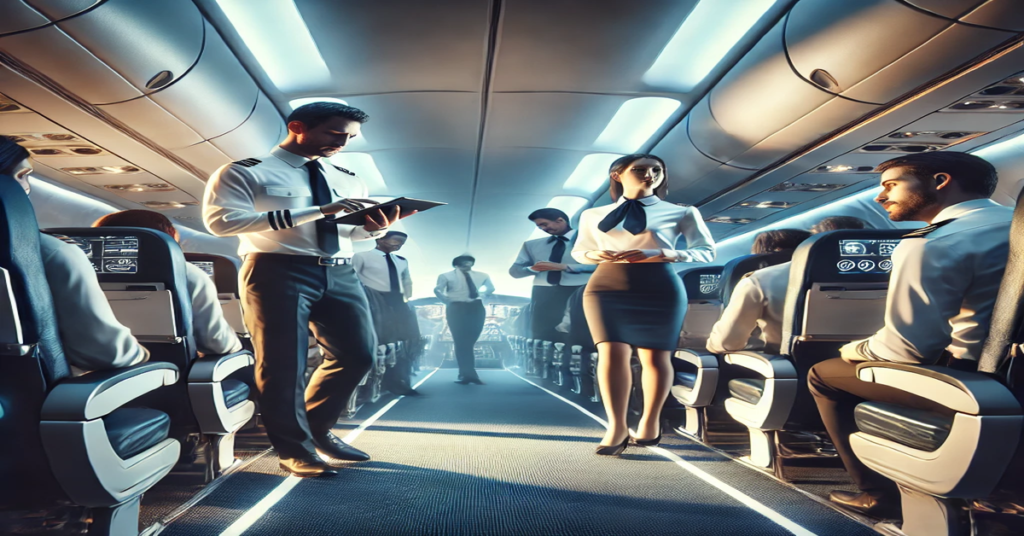Aviation remains one of the safest forms of transportation, with countless safety protocols and highly trained crews ensuring passenger security. However, emergencies can occur, and the way airlines respond plays a crucial role in safeguarding lives. The recent Delta Flight DL67 emergency incident has drawn significant attention due to the swift actions taken by the crew and passengers. In this comprehensive guide, we’ll examine the details of the event, how emergencies are managed in aviation, and what passengers can do to ensure their own safety.
Overview of Delta Flight DL67 Emergency
Delta Flight DL67, operated by Delta Air Lines, recently experienced an emergency situation during its route. While specific details of the emergency may vary depending on the source, reports indicate that the flight faced mechanical issues or a mid-air medical emergency, both of which can lead to precautionary landings or emergency procedures.
This incident highlights the importance of aviation safety, crew preparedness, and the cooperation of passengers during crises. Here, we will break down what typically happens during such events and provide a detailed look at the protocols followed by airlines.
What Constitutes an Aviation Emergency?
An aviation emergency encompasses any situation where the safety of the aircraft, crew, or passengers is at risk. Emergencies can range from minor technical issues to severe crises requiring immediate action. Some common types of aviation emergencies include:
1. Mechanical Failures
- Problems with the engine, landing gear, hydraulics, or other critical systems can lead to emergency landings or diversions.
2. Medical Emergencies
- Medical incidents involving passengers or crew members may require the aircraft to divert to the nearest airport.
3. Weather-Related Emergencies
- Severe weather conditions such as turbulence, storms, or icing can necessitate route changes or emergency landings.
4. Cabin Fires or Smoke
- Fires within the aircraft, whether caused by electrical issues or onboard equipment, require immediate action and evacuation procedures.
5. Security Threats
- Threats such as hijackings, suspicious activities, or bomb threats are treated as emergencies, often involving law enforcement.
Timeline of Events: Understanding Flight DL67’s Emergency Response
While exact details of the Delta Flight DL67 emergency may vary, understanding how typical emergency responses are managed can provide insight into what passengers experience.
1. Initial Detection of the Problem
- The flight crew, consisting of pilots and cabin crew, monitors the aircraft’s systems and passenger conditions continuously. If a mechanical failure or medical emergency is detected, the crew will initiate standard emergency protocols.
2. Communication with Air Traffic Control (ATC)
- Upon identifying the issue, the pilot-in-command contacts ATC to declare an emergency using the universal code “MAYDAY” for severe situations or “PAN-PAN” for less critical scenarios.
3. Decision to Divert or Land
- Depending on the nature of the emergency, the flight may be diverted to the nearest airport with adequate medical or technical facilities.
4. Passenger Communication
- The crew informs passengers of the situation through announcements, ensuring they remain calm and follow instructions.
5. Emergency Landing Procedures
- If required, the pilots initiate emergency descent or landing procedures. The cabin crew ensures that passengers assume the brace position and follow safety protocols.
6. Ground Emergency Response
- Upon landing, emergency response teams, including firefighters, paramedics, and security personnel, are typically on standby to assist passengers and crew.
Delta Air Lines Safety Record and Preparedness
Delta Air Lines, one of the world’s largest and most reputable airlines, has a strong safety record built on rigorous maintenance, pilot training, and adherence to aviation regulations.
1. Pilot Training and Qualifications
- Delta pilots undergo extensive training, including emergency simulations and recurrent evaluations to ensure they are prepared to handle various scenarios.
2. Aircraft Maintenance
- Delta’s fleet undergoes regular inspections and maintenance checks, reducing the likelihood of mechanical failures.
3. Cabin Crew Emergency Training
- Flight attendants are trained to handle medical emergencies, evacuations, and passenger management during crises.
4. Collaboration with Air Traffic Control
- Delta’s close coordination with ATC ensures that emergencies are managed efficiently, with minimal disruption to passenger safety.
How Passengers Can Prepare for In-Flight Emergencies
Although emergencies are rare, passengers can take proactive steps to stay safe and informed during flights.
1. Listen to the Safety Briefing
- Pay close attention to the pre-flight safety demonstration provided by the cabin crew. Familiarize yourself with the location of exits, oxygen masks, and life vests.
2. Read the Safety Card
- Each seat pocket contains a safety card that outlines emergency procedures specific to the aircraft model.
3. Wear Your Seatbelt
- Keep your seatbelt fastened while seated to reduce the risk of injury during turbulence or unexpected events.
4. Follow Crew Instructions
- In the event of an emergency, follow the instructions provided by the crew without delay.
5. Know the Brace Position
- The brace position helps protect passengers during an emergency landing. Practice this position and understand when to assume it.
Common Types of Emergency Landings
An emergency landing is a precautionary measure taken when continuing the flight could jeopardize passenger safety. There are three main types:
1. Precautionary Landing
- Carried out when there is no immediate danger, but a potential issue has been detected.
2. Forced Landing
- The aircraft must land due to a serious issue, such as engine failure or fuel depletion.
3. Ditching
- A water landing conducted in cases where an airport is not within reach. Although rare, ditching is a carefully controlled procedure.
Post-Emergency Protocols: What Happens After an Emergency Landing?
After an emergency landing, several procedures are implemented to ensure passenger well-being and investigate the cause of the incident.
1. Evacuation
- Passengers may be evacuated using emergency slides if there is an immediate threat, such as fire or smoke.
2. Medical Assistance
- Injured passengers receive medical attention, and anyone experiencing trauma is provided with psychological support.
3. Passenger Rebooking
- Airlines like Delta typically assist passengers with rebooking flights and providing accommodation if necessary.
4. Investigation
- Aviation authorities and airline representatives investigate the cause of the emergency to prevent future occurrences.
Lessons Learned from Aviation Emergencies
Aviation emergencies, including the Delta Flight DL67 incident, offer valuable insights into improving safety standards and passenger preparedness. Key lessons include:
- The Importance of Crew Training: Regular training ensures that crew members respond effectively under pressure.
- Advancements in Aircraft Technology: Modern aircraft are equipped with advanced diagnostic systems that detect issues early.
- Passenger Awareness: Educating passengers on safety protocols can reduce panic and improve outcomes during emergencies.
Conclusion
The Delta Flight DL67 emergency serves as a reminder of the unpredictable nature of air travel and the critical role that airline protocols, crew training, and passenger cooperation play in ensuring safety. While emergencies are rare, understanding the procedures and being prepared can make a significant difference.
As Delta and other airlines continue to improve safety measures, passengers can have confidence in the aviation industry’s commitment to protecting lives.
FAQs
1. What caused the Delta Flight DL67 emergency?
While details vary, emergencies like DL67 often result from mechanical issues, medical emergencies, or adverse weather conditions.
2. How do pilots handle mid-air emergencies?
Pilots follow strict protocols, including communicating with ATC, diverting the aircraft, and ensuring passenger safety through coordinated crew actions.
3. Are emergency landings dangerous?
Although they can be stressful, emergency landings are carefully managed and generally safe due to crew training and pre-established protocols.
4. What should passengers do during an in-flight emergency?
Passengers should remain calm, listen to crew instructions, and assume the brace position if directed.
5. How often do in-flight emergencies occur?
In-flight emergencies are rare due to stringent maintenance and safety standards in the aviation industry.
6. What happens after an emergency landing?
After an emergency landing, passengers are evaluated for injuries, rebooked on alternative flights, and investigations are conducted to identify the cause.







